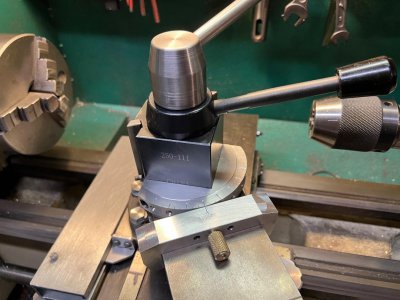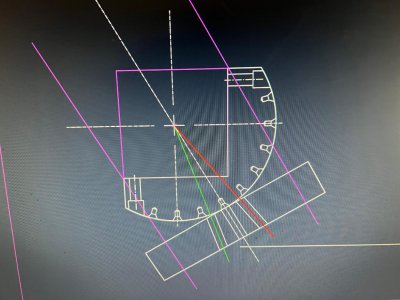That's why I didn't get rid of my compound

. But now if I had to I could cut threads without the compound. I could use my z-axis DRO and handwheel on my lead screw to approximate the motion of the compound set at 29.5 degrees. One nice result of this approach is that your cross slide directly indicates the depth of the thread you are cutting so you are getting something back for the additional work of advancing two cutting axes.
Some don't bother with setting the compound over, they just plunge cut. This approach also doesn't require a compound.



